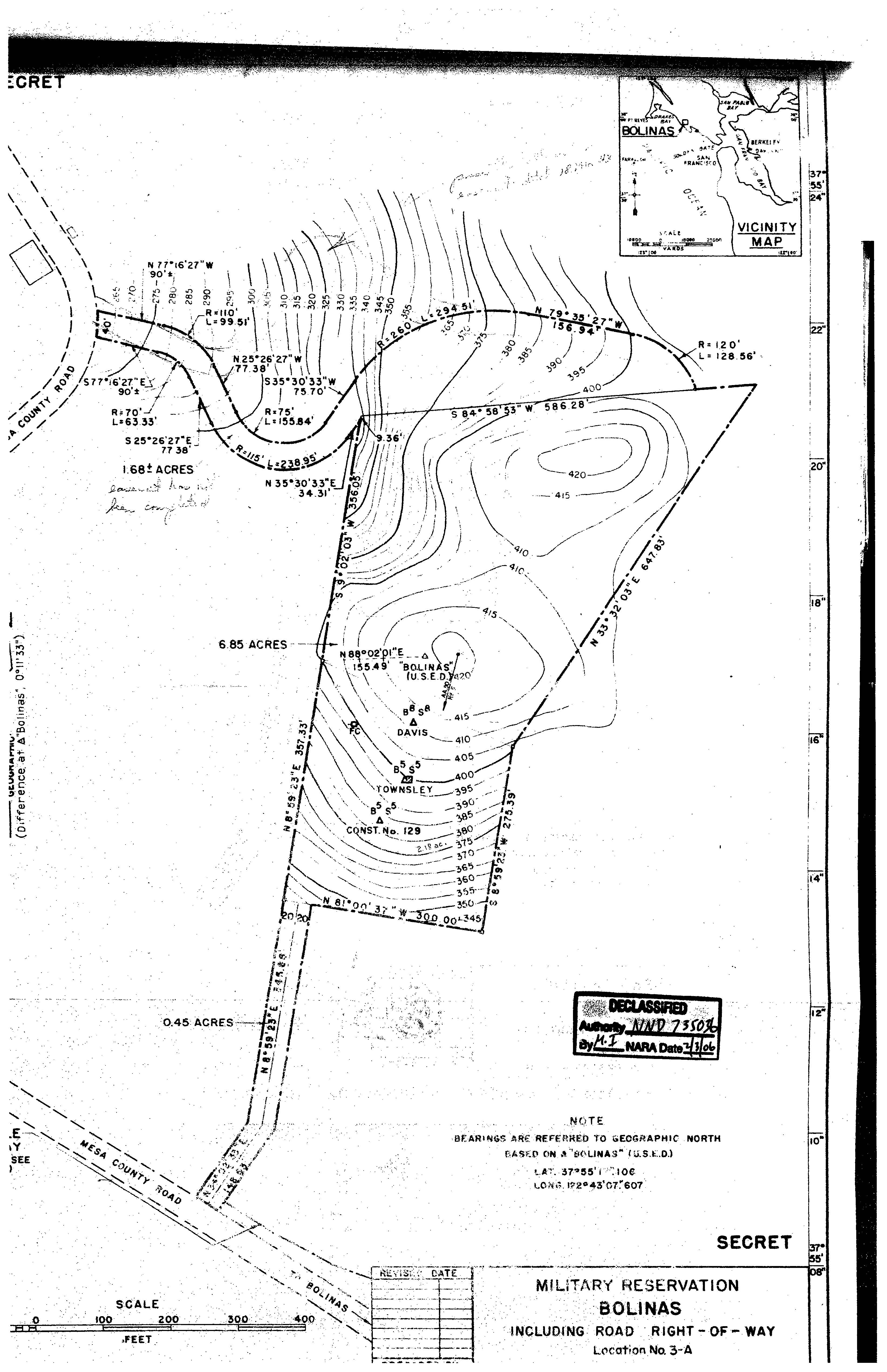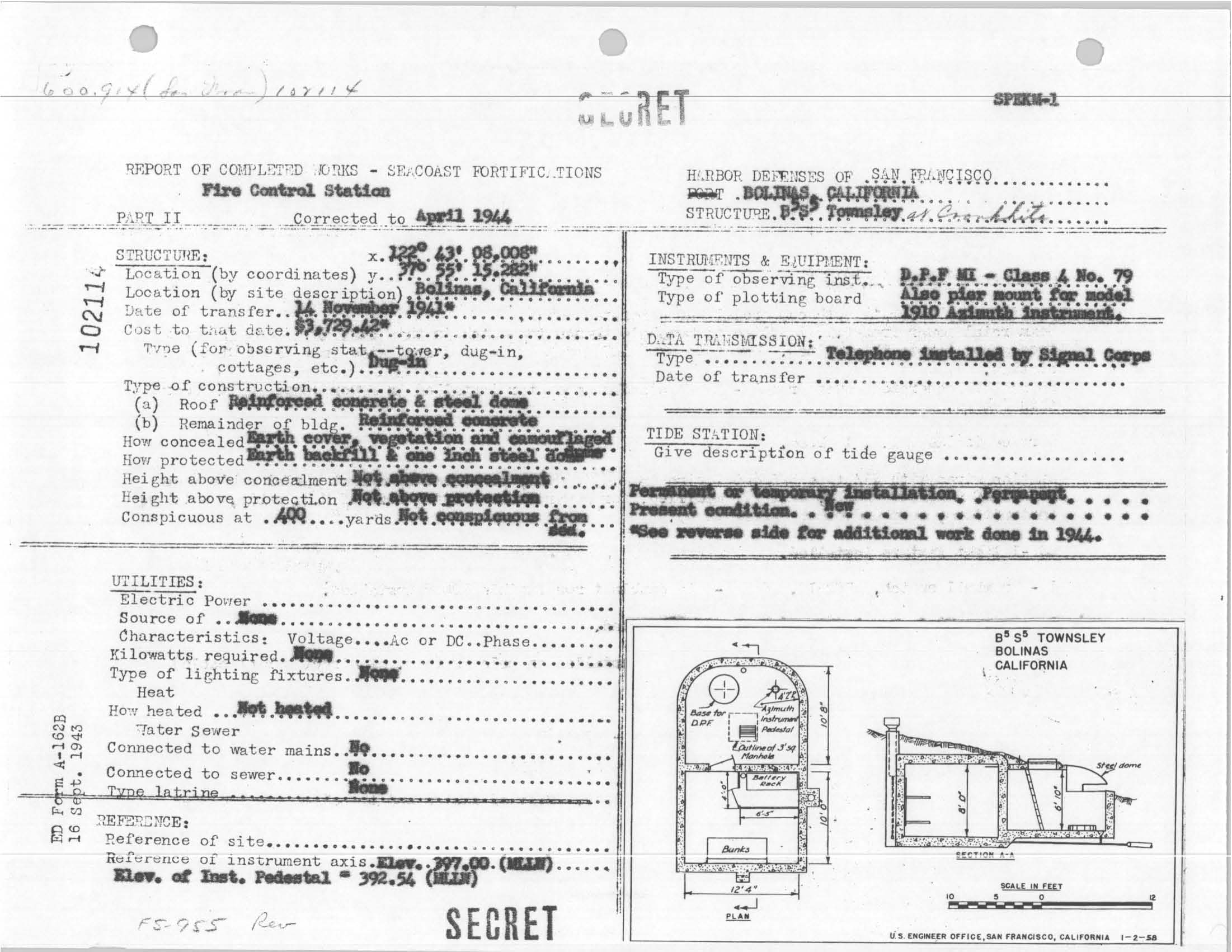
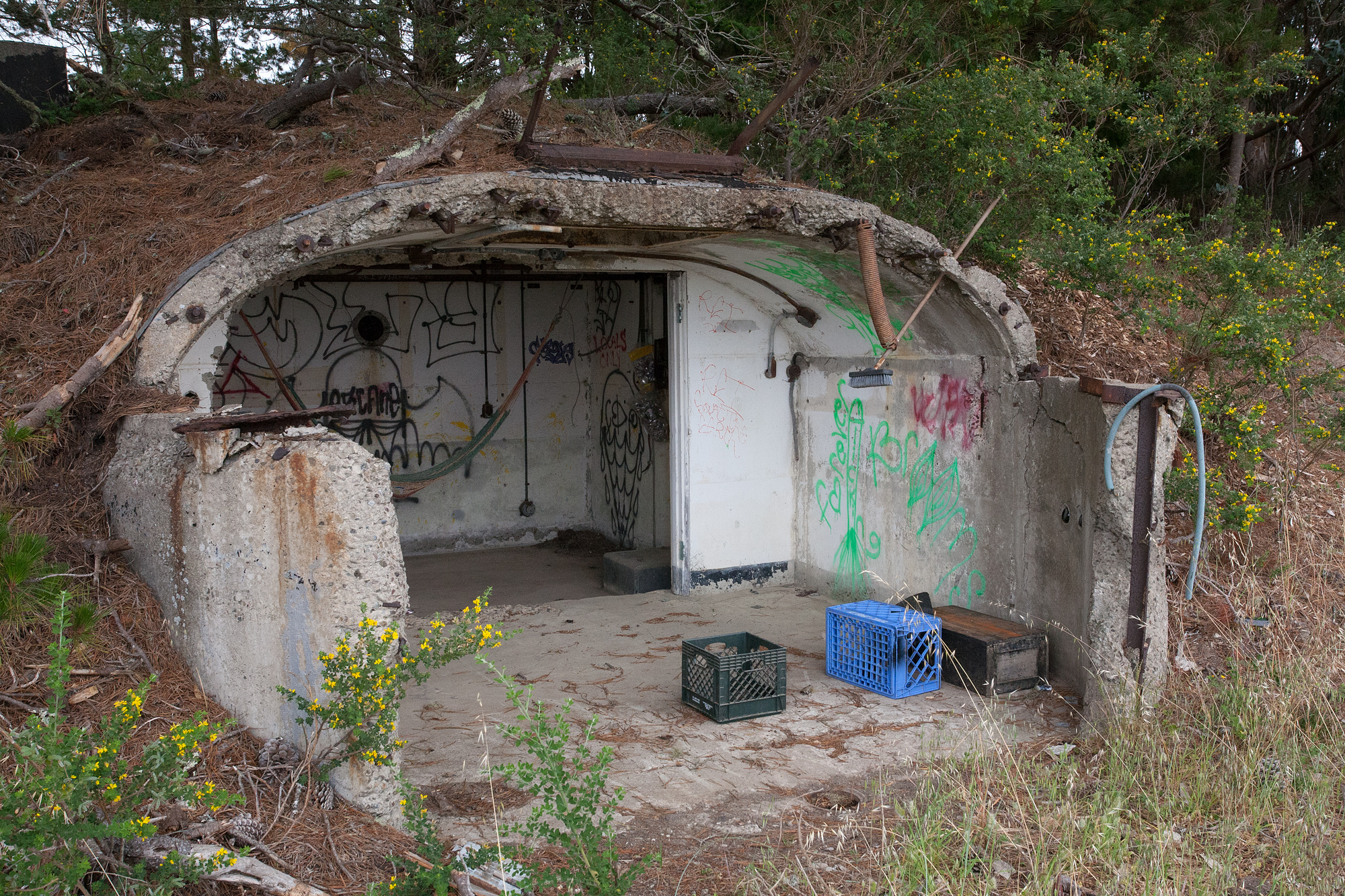
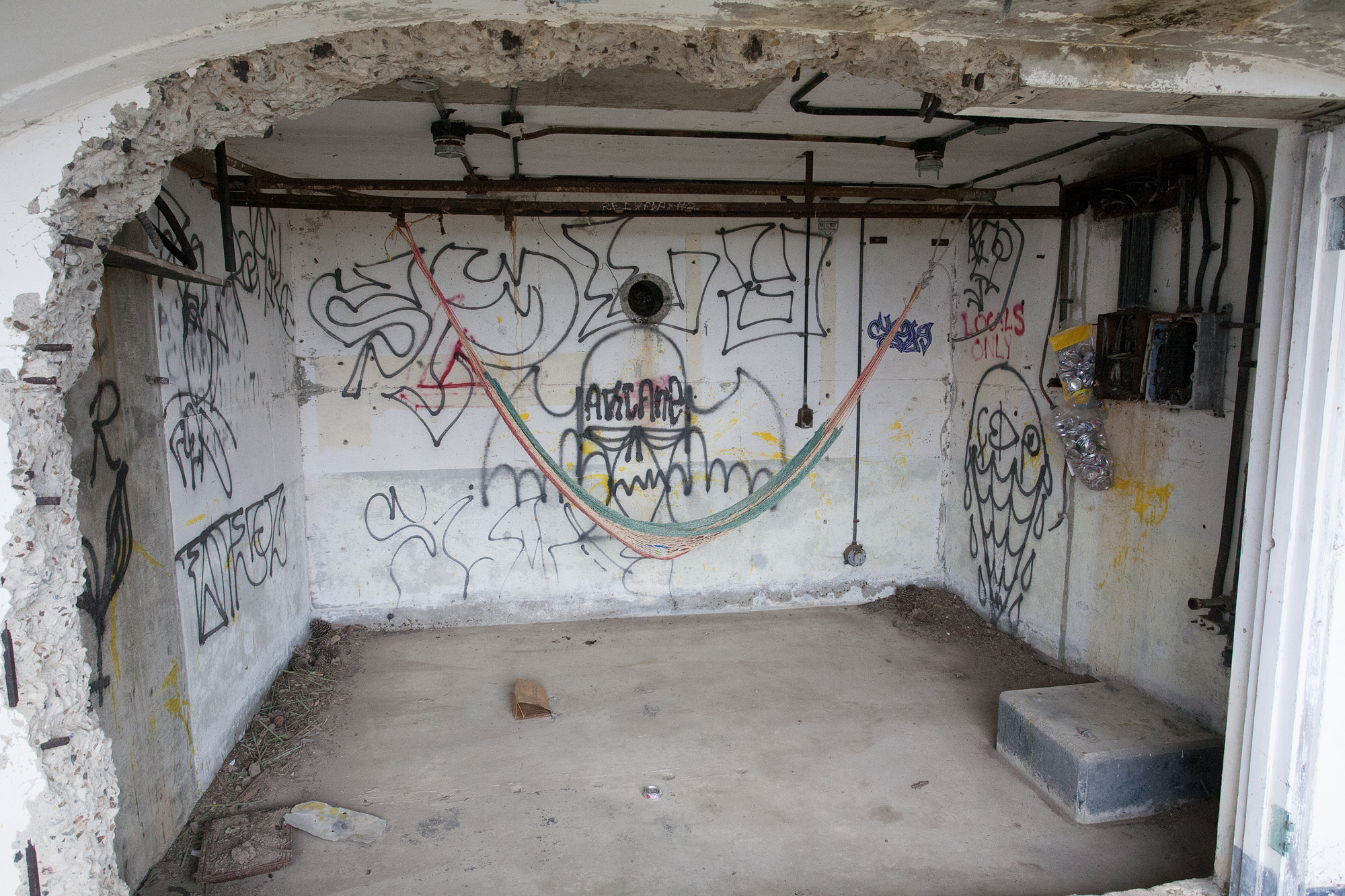
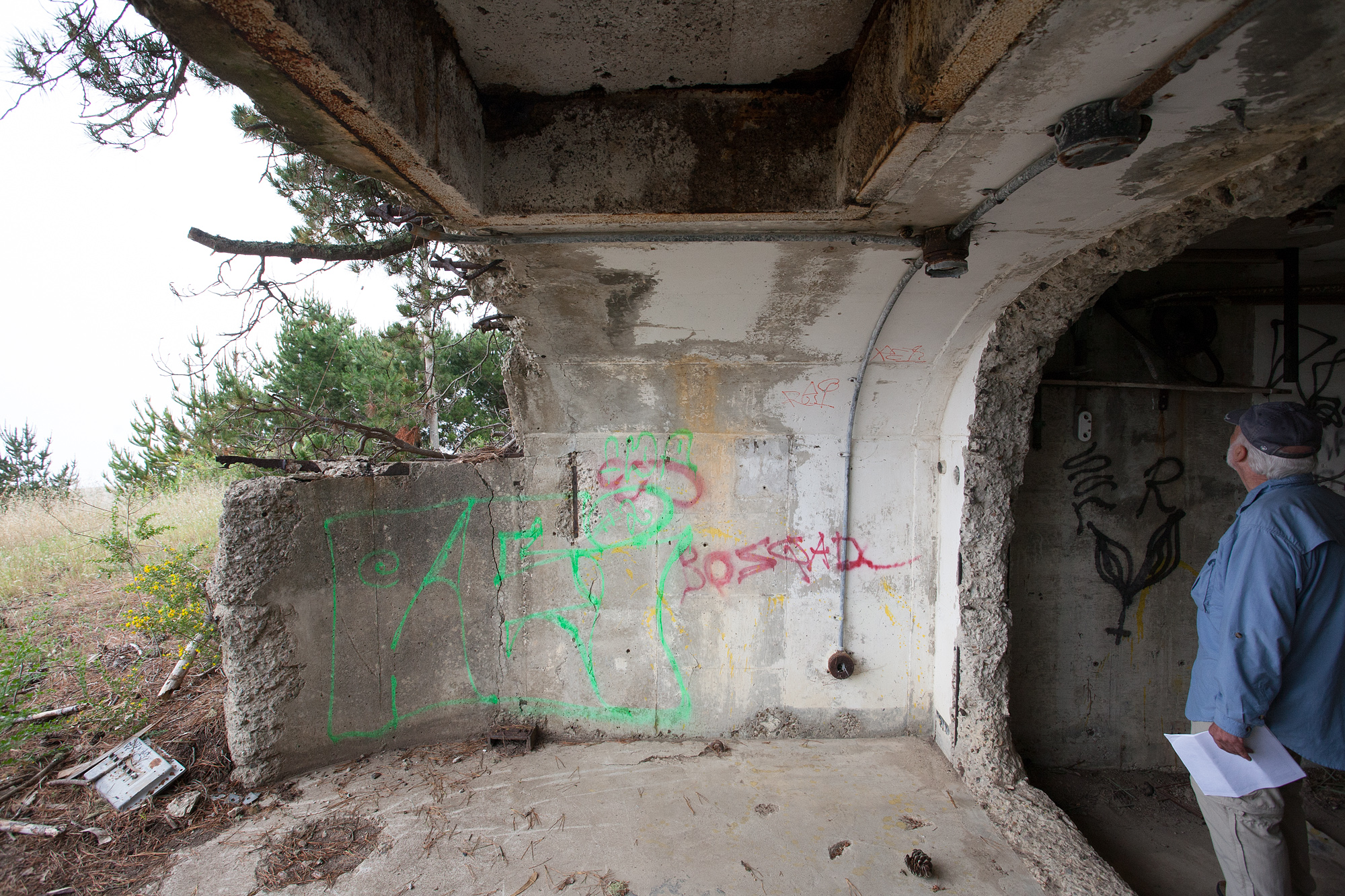
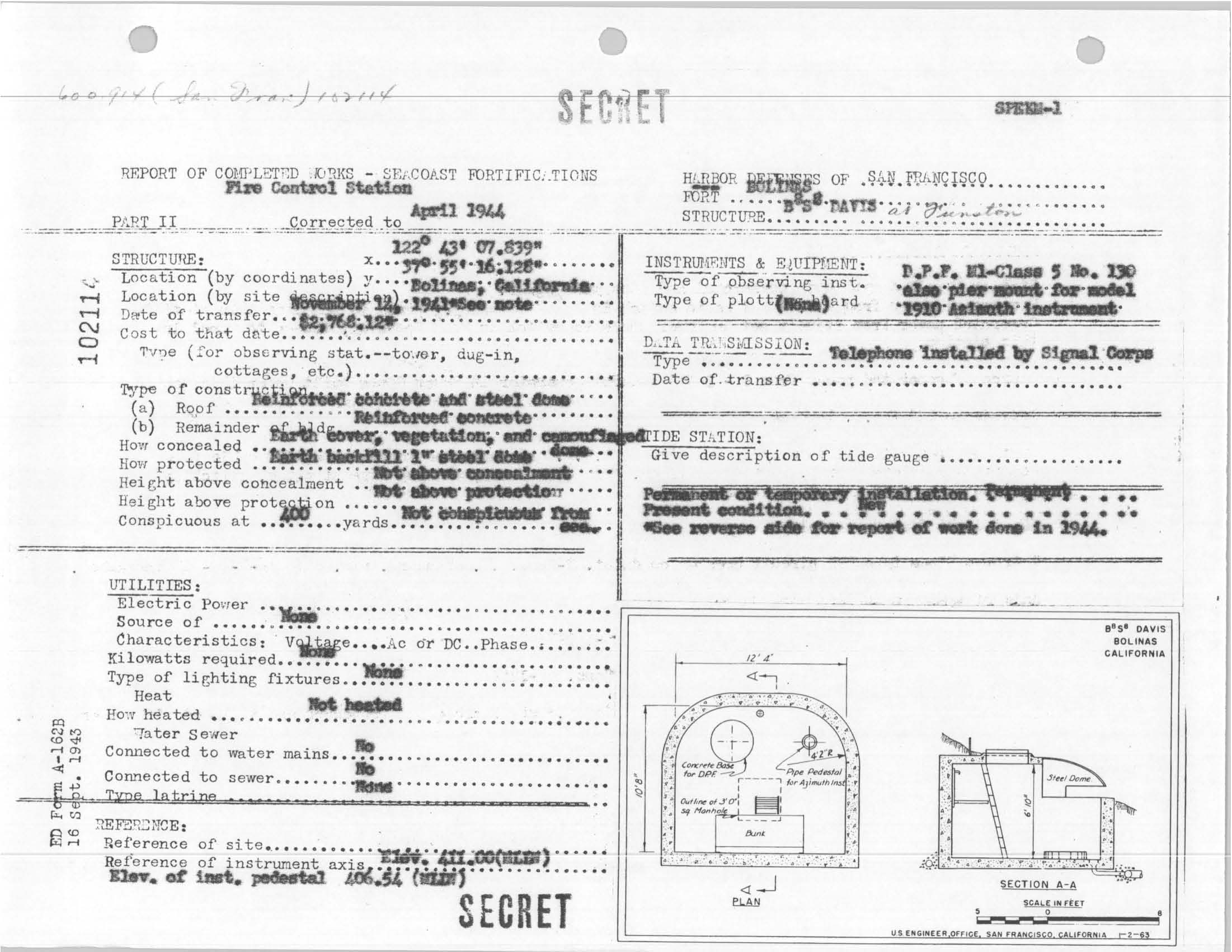
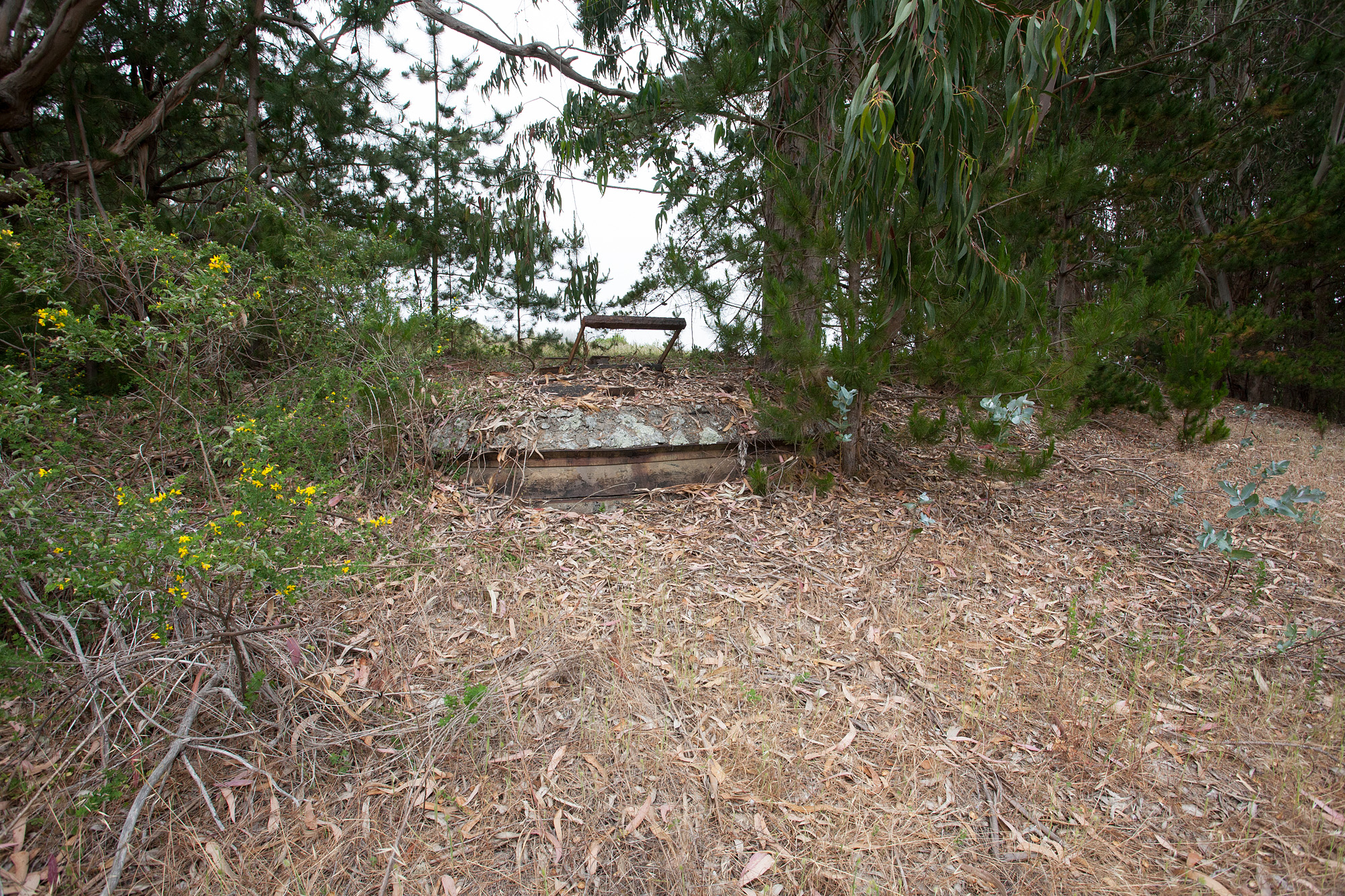
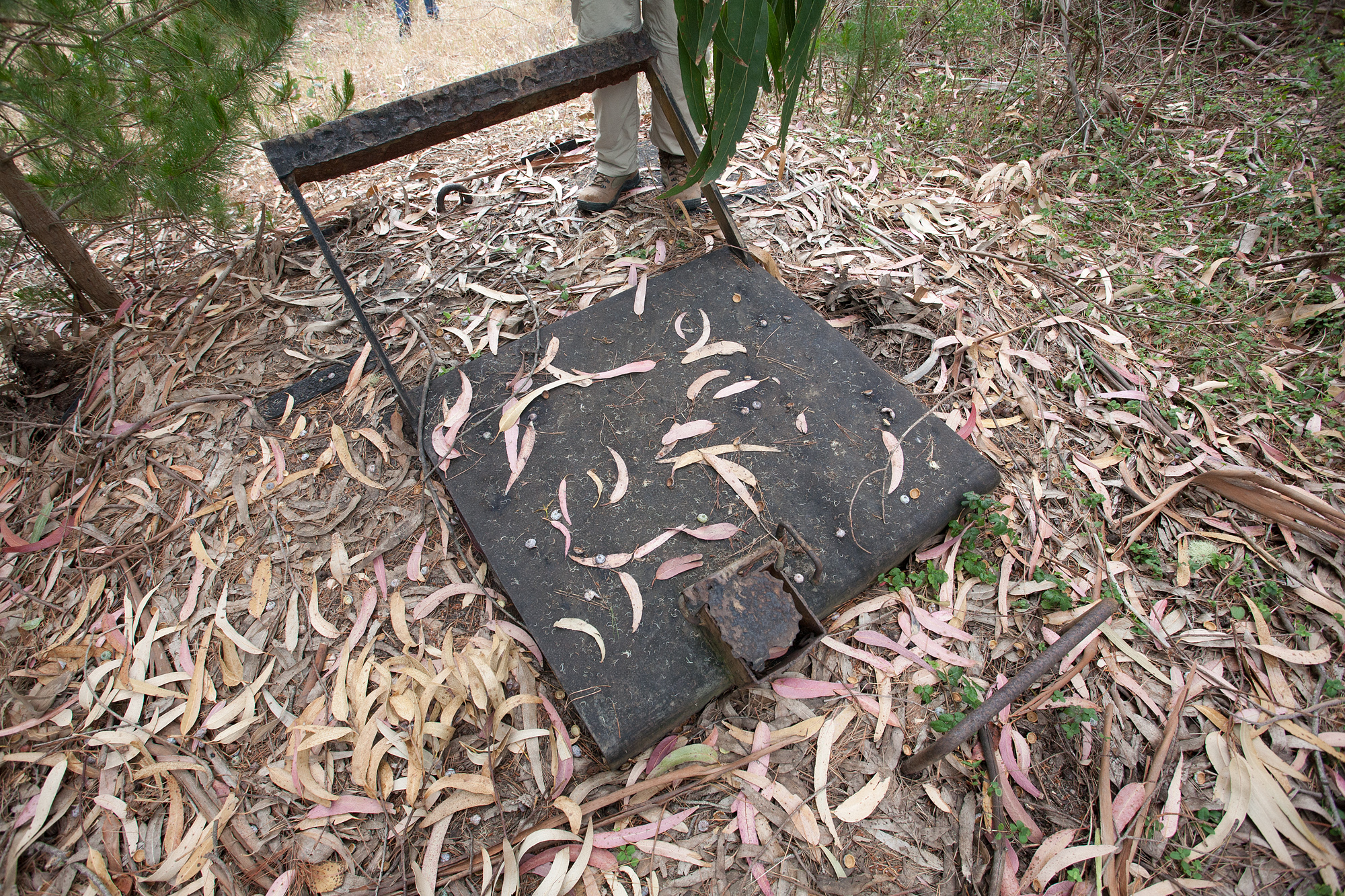
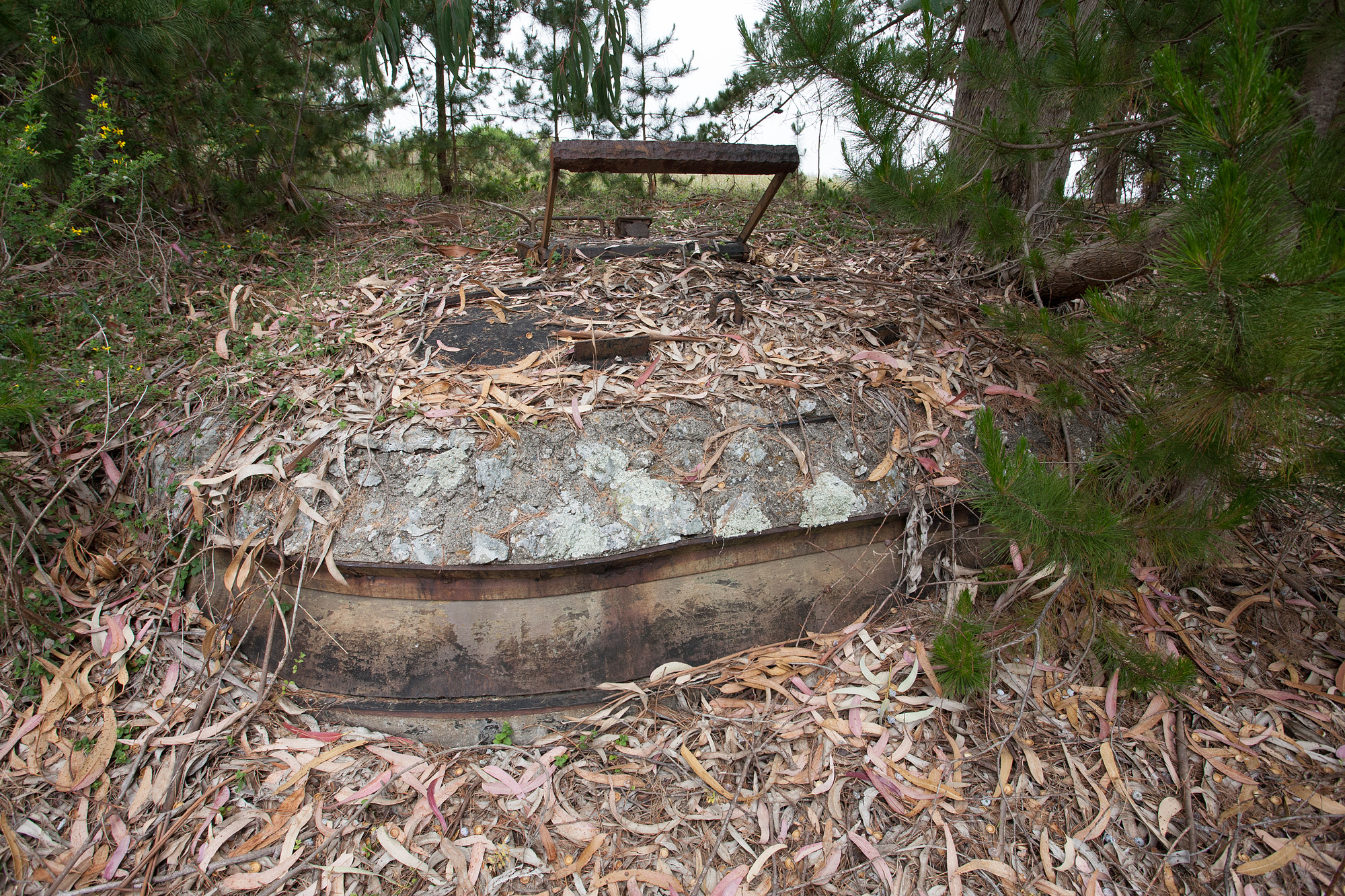
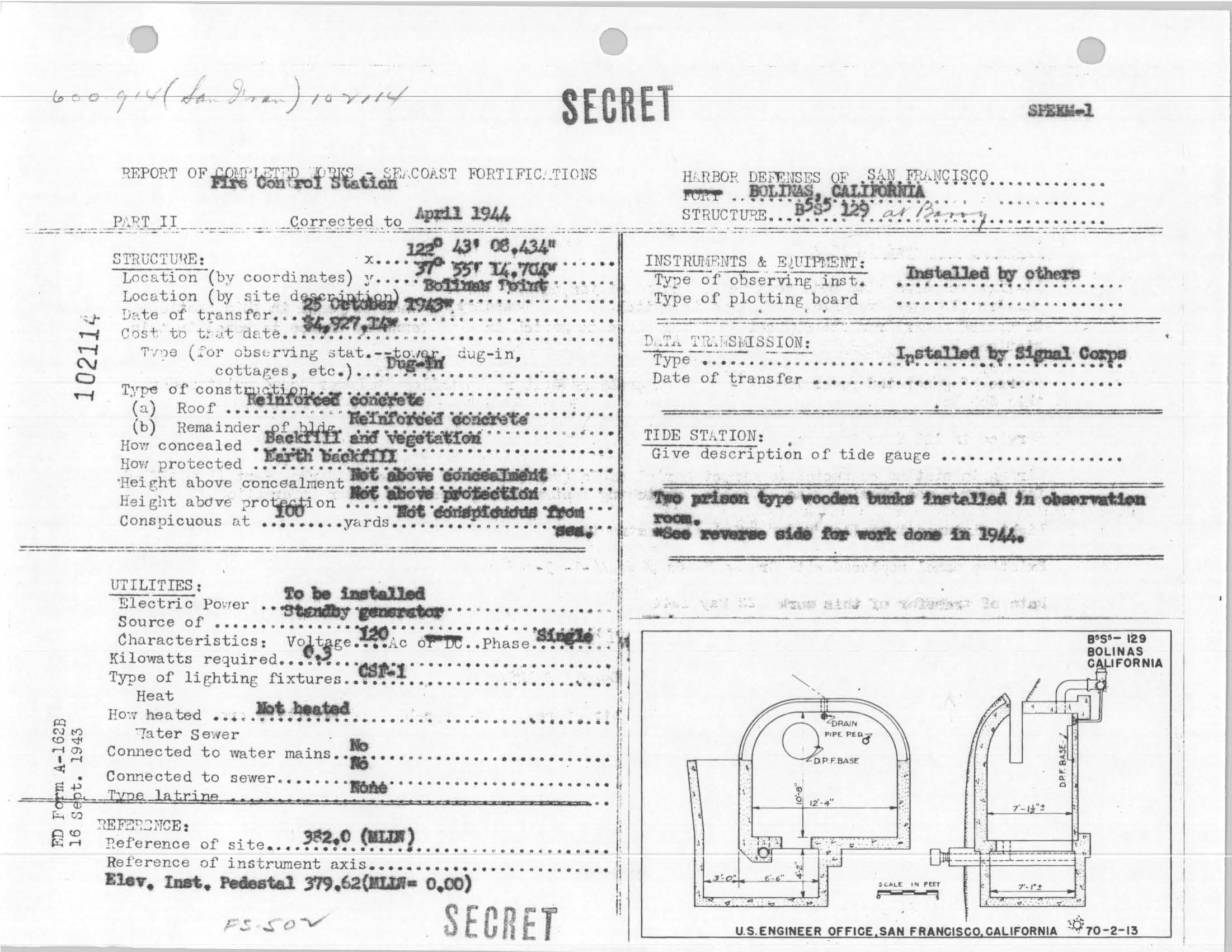

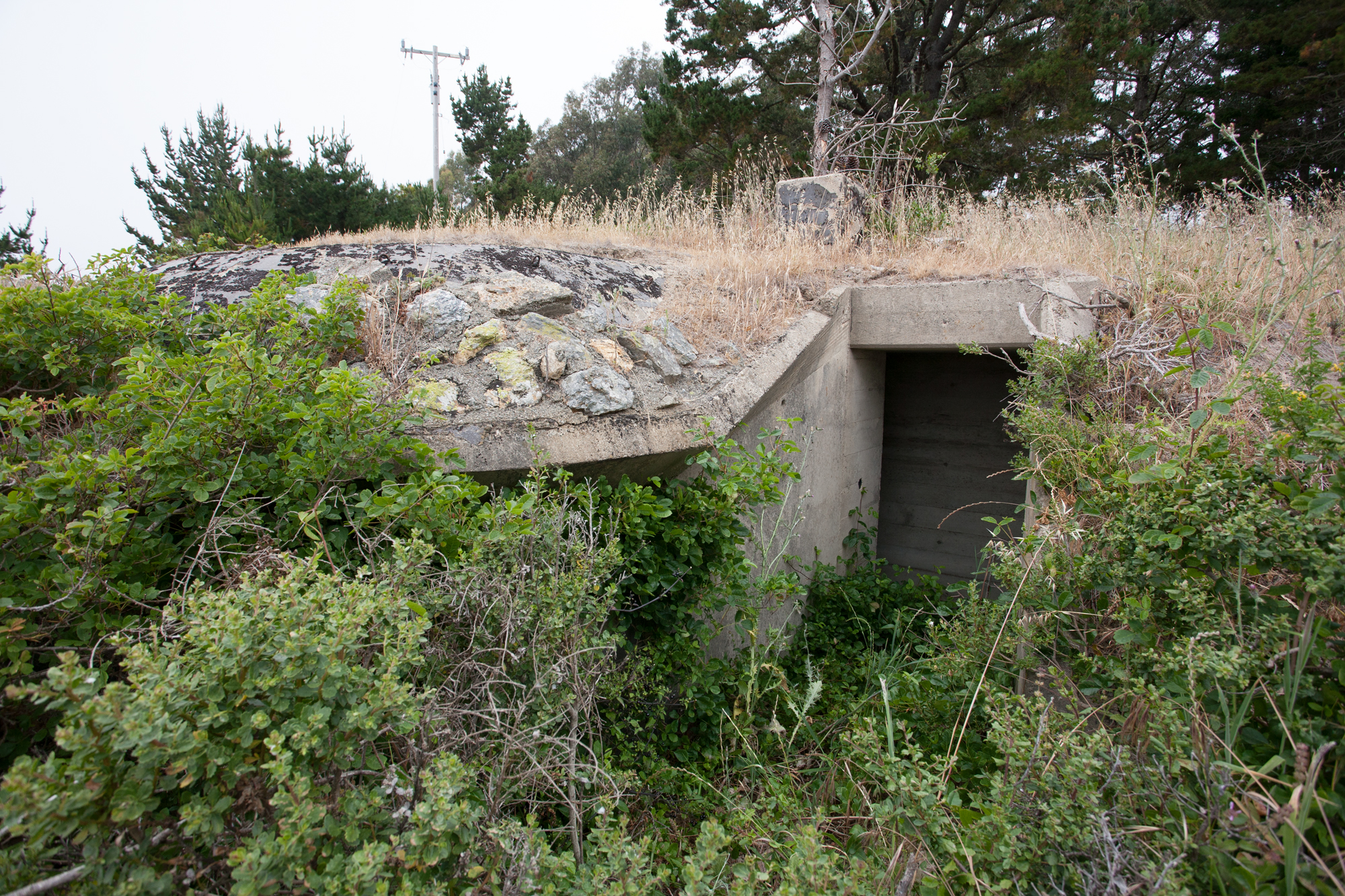
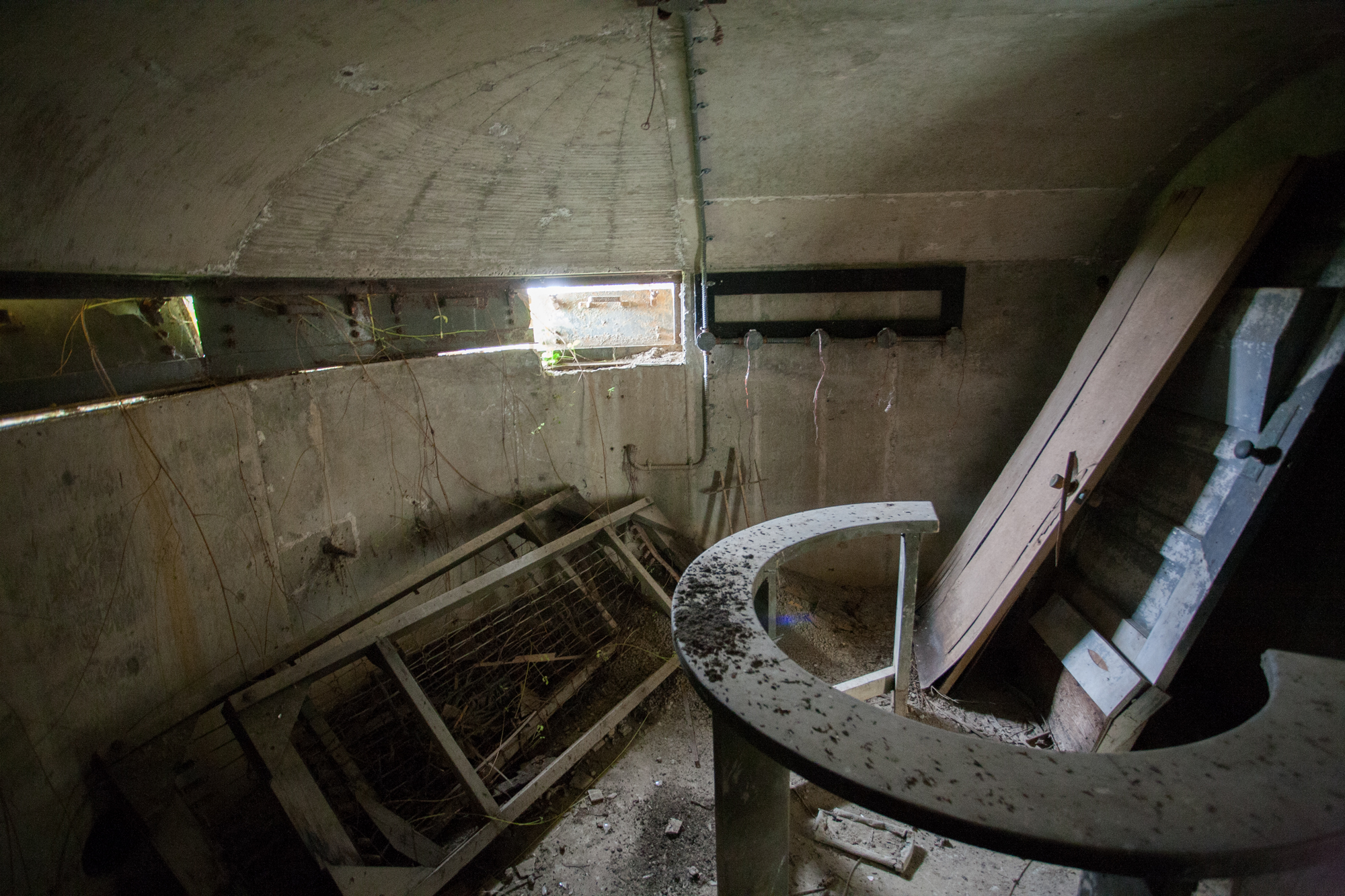
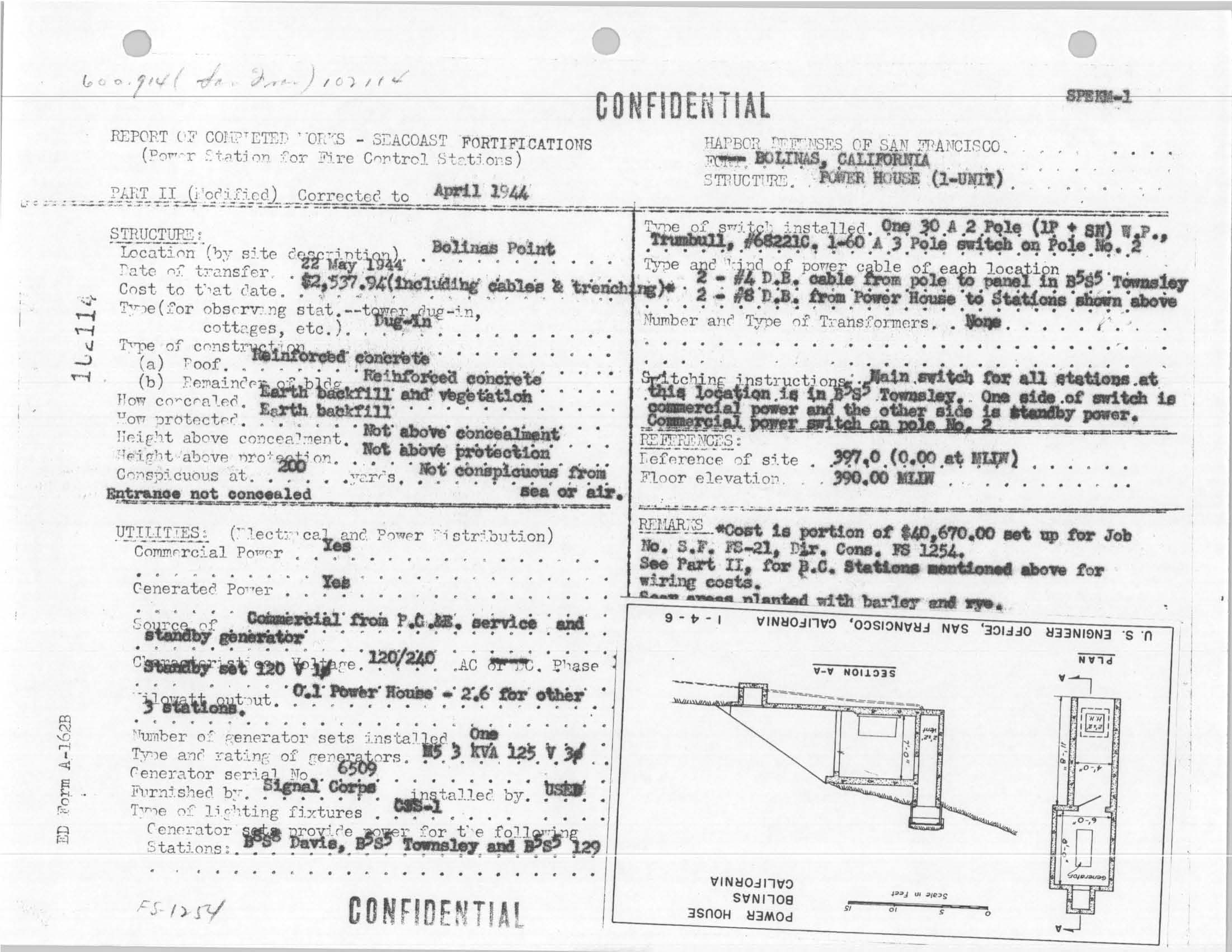
Bolinas Military Reservation was initially established as part of the 1940 modernization program of the Harbor Defenses of San Francisco in which new, long range 16-inch guns were placed into active service at Fort Chronkite (Battery Townsley), Fort Barry (Battery Construction 129) and Fort Funston (Battery Richmond P. Davis). This reservation should not be confused with Bolinas Point Military Reservation which was located approximately 1-mile to the South of the Site and served as a location for an SCR-296 Radar and a searchlight station.
Each of these batteries had a small, reinforced concrete bunker (known as a "base end station") located at the Site to provide target acquisition, ranging, and azimuth data. This fire control data was processed and given to the gun crews in order to accurately engage targets over the horizon.
Due to continuous wartime operations, it became necessary to provide additional living quarters and messing facilities at the Site. By the end of 1942, a concealed, wood framed structure measuring 16-feet by 33-feet was constructed to meet this requirement.
On 18 March 1943, the War Department acquired an additional 4.67 acres was acquired by purchase and a new, more concealed access road established through a right-of-way easement. On 25 October 1943, a third base end station was transferred from the U.S. Army Corps of Engineers (USACE) to the Harbor Defenses of San Francisco (HDSF) to support Battery 129 which was under construction at Fort Barry. This battery, which was to mount two 16-inch rifles, was not completed due to the end of World War II.
In a formerly secret report titled, Harbor Defenses of San Francisco, Surface Craft Detectors, SCR-296, 8 July 1943, the apparent plan to place an SCR-296 radar set to support Batteries Townsley (Fort Chronkite), Wallace (Fort Barry) and Richmond P. Davis (Fort Funston) at Bolinas Military Reservation was changed and the equipment was placed at Bolinas Point Military Reservation.
On 22 May 1944, the USACE transferred a newly completed fortified powerhouse that would provide backup electrical service in the event that the commercial power from the Pacific Gas and Electric Company was interrupted. This 48-squarefoot underground powerhouse contained an M-5, gasoline powered, 3-kVA electrical generator. As this generator had its own gasoline tank, there was no need for an above ground/underground storage tank. This generator would have been serviced by a soldier using five-gallon gas cans.
Besides individual small arms (i.e. M-1903A3
"Springfield" and M-1 "Garand" .30-caliber
rifles and M-1911A1 .45-caliber pistols), the Site was defended
by a single M-2 .50-caliber machine gun configured as an antiaircraft
gun. This gun was located on top of the westernmost of the two
hill tops on the Site and was known as ".50-caliber Antiaircraft
Gun No. 5".
By 1948, the Coast Artillery Corps became obsolete in the face
of jet aircraft and nuclear weapons. The large guns that protected
San Francisco were dismounted and cut up for their scrap metal
value. With this deactivation of the batteries, their base end
stations were also deactivated.
On 31 October 1951, the Site was transferred to the Department of the Navy. However in a letter from the Secretary of the Army dated 28 November 1952, the Site was withdrawn from the transfer and control of the site was retained by the U.S. Army. Available documentation did not provide a reason for this change.
On 22 May 1959, the San Francisco District, USACE reported the Bolinas Military Reservation as excess to the General Services Administration (GSA). GSA quitclaimed the Site to Fred N. Woods on 15 June 1960.













Site Map
